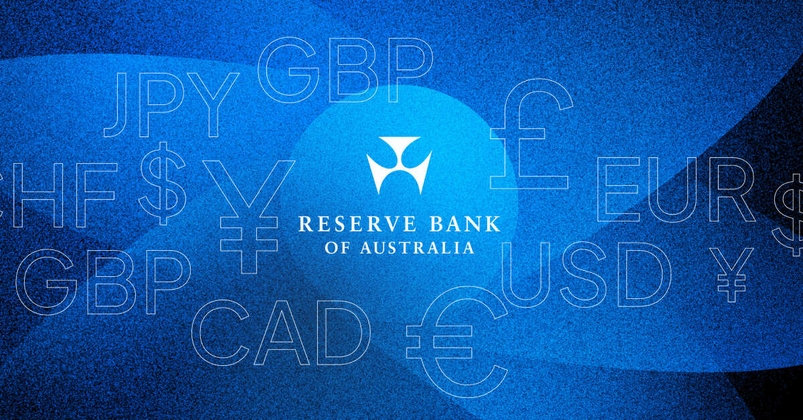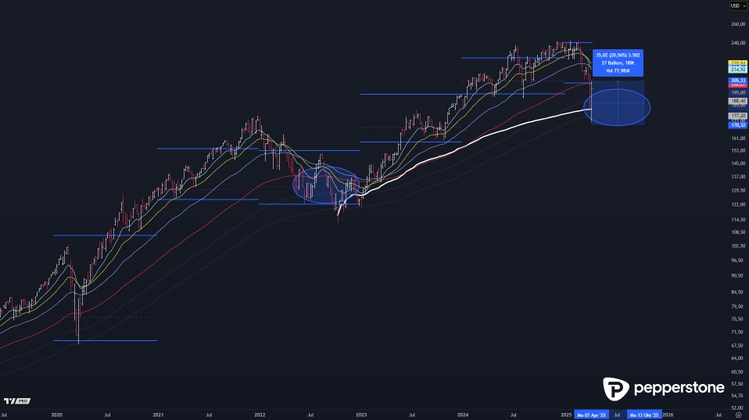- لغة عربية
- English
- 简体中文
- 繁体中文
- ไทย
- Español
- Tiếng Việt
- Português
Since its inception, the FTSE100 (the main UK stock market index) has made an annual return of 5.7% without dividend payments taken into consideration. This outstrips what you could have made leaving your money on deposit in the bank.
You own part of a plc company
Directly investing in shares will result in you owning part of the company, no matter how small your shareholding. Any investor can buy shares in a PLC.
PLC stands for a Public Limited Company. A similar abbreviation for the United States is INC, standing for incorporation. A company that is a PLC has a proportion of its shares floated freely on the London Stock Exchange (LSE).
Investing in a company comes with ‘limited’ liabilities. You are not responsible for company losses, should they occur.
Floating on the LSE (IPO)
When a company decides to ‘go public’, there is a dedicated day when they float on the exchange. This is when a proportion or the whole of the company is offered for purchase to the marketplace. It is called an IPO, initial public offering.
An IPO can attract a lot of interest from pension funds, hedge funds, professional and retail investors.
There are a limited number of shares on offer. You may hear that the shares were ‘oversubscribed’ meaning that there were more investors willing to buy the stock than were available.
Investing in single stocks
Single Stocks
Like most ventures, there are pros and cons to investing in single stocks. With the right amount of research, you can find gems within the marketplace.
Although this can be financially rewarding, it can take substantial analysis to establish, what you believe to be, good value for a stock. Furthermore, you will need to monitor your portfolio, adjusting your investment levels when the outlook changes.
For example, a lot of tech stocks like Amazon and Netflix performed well through the lockdown period that was caused by the outbreak of the coronavirus in 2020.
In times of recessionary periods, the best companies to invest in are usually essential services. This includes your daily basics like healthcare, food (supermarkets), and clothing. Another inevitable requirement for some unfortunate souls is funeral services. Providers of alcohol also tend to prosper with ‘stay-at-home’ drinking increasing. You may need to rebalance your portfolio when the market dictates.
Understanding Accounts
Let us look at some basic information that you should analyse before setting an investment level for a stock. You are going to need to dig deep into the company accounts. This information is normally readily available on the company website, especially if it is FTSE100 stock.
We are going to look at the FTSE100 leader, SHELL PLC (SHEL LSE).
When is the company next due to report?
Companies produce annual financial reports with income statements every three months. You should be aware of these dates and what is the estimated forecast for the report. A big beat or a big miss can have a substantial impact on the company’s share price.
This information is readily available either on the company website or via a good charting package. Here we can see the next earnings report due for Shell on the 27th of October 2022.

Does the company make a net profit?
The sales of the company are growing, and the costs look to be under control, but does the company make any profit? Here we need to do a simple calculation:
Gross Profit = the total turnover (sales) minus the costs
Net Profit = the gross profit minus expenses
The total revenue for Shell in the Q2 (Quarter 2) of 2022 is £77.01billion jumping up from £64.31 billion the previous quarter. The net income has risen from £5.31 billion to £14.38 billion.

Figure 2 TradingView Shell total revenue and net income
Looking down to the Net Income as a Year-on-Year growth, this was a build of 486.76%. Can this increase be sustained?

Earnings Reports
We can see by the earning report the Shell beat estimates in 2021 by 5.02%. With the estimate for 2022 jumping to 5.08 billion, can Shell sustain the momentum?

Figure 4 TradingView Shell earnings
What is the EPS?
EPS stands for Earnings Per Share. The formula for the EPS is simple:
EPS = Net profit ÷ Issued Shares Issued SharesThe EPS is the only ratio that must be disclosed on the face of the accounts. In its simplest terms, the EPS highlights how much profit has been earned per share. If the company made £40 million profit and it has ten million shares, then the EPS is £4.
For Shell the basic EPS was £1.93, a jump of 513.38% from the previous quarter. With Q3 expected at 3.69, we are seeing a substantial growth in EPS

Figure 5 TradingView Shell EPS
What is the P/E ratio?
The price per earnings ratio is the most common way of valuing shares. The calculation is:
P/E = Share price ÷ EPSThe number divides the current share price by the earning per share EPS (as above).
The end figure highlights the number of years, at the current level of profit, it would take to pay for the share (it should be noted this is not dividends).
The big advantage of knowing the P/E is that it allows for a quick and easy comparison to other companies within the same sector.
The P/E ratio works like a technical indicator such as the RSI, relative strength index. A high P/E ratio above 20 and the company is expected to perform better than the general economy. A P/E ratio above 30 and the outlook is extremely bullish. We are getting to the high end of the territory and should only invest if we strongly agree with the hype. Conversely, a P/E ratio below 4 offers a bearish or negative outlook on the company. With analysis, reviewing companies with low P/E ratios, it is possible to find diamonds in the rough.
The current P/E ratio for Shell is 6.24. The average P/E ratio on the stock market is between 15-17.The P/E ratio for Shell has been extremely volatile reaching 40.38 in the 3rd quarter of 2021. It reached the dizzy heights of 73.57 in 2015 when its share price had halved from the peak of 2014.

Figure 5 TradingView Shell P/E ratio
In summary, a low PE ratio may look attractive to investors with the stock being undervalued by the marketplace. This doesn’t mean that you should shy away from companies with higher P/E ratios, but you need to believe that these companies will grow as much, or more than, the market expectations.
Can I rely on a dividend payment and how much to expect?
What is the company’s dividend policy? Are you relying on the dividend payments for income? Are you looking to reinvest your dividends?
There is no official ruling that a company must post a dividend policy, but most PLCs do. Here is an extract from Shell PLC:
Subject to Board approval, Shell aims to grow the dividend per share by around 4 percent every year, and the Group will target the distribution of 20-30% of its cash flow from operations to shareholders. The Group expects over time to return cash to shareholders through a combination of dividends and share buybacks.
Shell PLC looks to have a solid dividend policy if you are looking for income from your investment. Some companies also offer a Dividend Reinvestment Plan (DRIP), where your dividend payments are invested back into the company. This can be extremely beneficial over the long-haul if you are not looking for an income. It has a similar outcome to accumulated interest, allowing for faster growth of your initial investment.
Other questions to ask
- Does the company have much cash?
- What is its level of debt?
- Is the company growing?
- What assets does it hold?
- What are the threats?
The technical outlook
You now have all the fundamental analysis for Shell. With good earnings and a low P/E ratio compared to the market, you believe that Shell is a good investment over the long-term*.
You may look to apply some basic technical analysis to the long-term charts to try and establish a long (buy limit) entry level.
*Not to be taken as trading advice
Shell (Shel LSE) weekly chart
Shell is trading near the upper level of its price range after a strong rally from the October 2020 low of 845. We have seen a period of consolidation that could be analysed as a corrective channel formation. The base of the channel currently comes in at 1837.

Figure 6 TradingView Shell channel base
Shell (Shel LSE) monthly chart
A look at the monthly chart, and we can see that 1837 is close to the midpoint for the high and low levels of Shell PLC over the last 20+ years (high 2845 low 845). It has also been pivotal, attracting both buyers and sellers over this period. We set an alert notice at this level, should the price pull down to support.

Figure 7 TradingView 50% pivot
Investment Funds
Investing in single stocks may seem complex and you do not have the time to do the research and analysis.Does this mean that you can’t profit from stock market investments? No. There are plenty of other ways to gain exposure to the markets. Here we will discuss a few options.
Investing in an ETF (Exchange Traded Fund)
What is ETF investing?
An ETF is an Exchange Traded Fund.They are a unique pooled investment vehicle that lets the investor express a view on a basket of products or asset group.
This could be in indexes, such as the actively traded SPDR S&P 500 ETF that tracks the performance of the S&P 500 index or perhaps the ETF Gold Trust, the Aberdeen Standard Physical Gold Shares.
Perhaps you are looking at getting exposure to the Telecommunications sector. The iShares Global Telecom ETF looks to track an index of equities in the communication sector.
Why trade ETFs
You invest in an ETF the same way that you invest in shares or stocks. They are quoted with an offer and bid price allowing you to buy and sell with ease.
The real beauty of an ETF is being able to gain exposure to a sector with limited funds. Taking our iShares Global Telecom ETF as an example, the ETF has a balanced holding in 73 different products. You would need a lot of separate trades to gain this exposure.
It is also professionally run and monitored with a fund manager keeping track of market trends and monitoring asset valuation and allocations. Although this takes out the leg work of analysis and investing in your own portfolio, ETFs like other funds, will come with a yearly fee.
Investing in an equity fund
What is an equity fund?
Equity funds invest in a portfolio of shares normally from a dedicated country, such as the United Kingdom, or a dedicated sector, such as energy or technology. Funds are run by fund managers. You are utilising their knowledge and expertise and for this there are annual fees to pay.
The AIM market
Bigger returns with higher risk
We can’t write this piece without mentioning the United Kingdom AIM market. AIM stands for Alternative Investment Market. It is a sub-market of the London Stock Exchange.
AIM is full of smaller companies looking to raise capital for their current or next venture. Being highly speculative, it attracts a lot of new investors looking to find the next Apple or Tesla.
How to wrap your portfolio
Where you hold your shares is a careful consideration. UK stocks held with an ISA (Individual Investment Account) come with a tax-free allowance. This year’s allowance is £20,000. This means that you can invest £20,000 in stocks and not be taxed on any profit accumulated.
Alternatively, you can trade through your SIPP. This is a self-invested personal pension. This offers the same benefits as a regular pension but allows you to choose your own investments.
How to succeed
Watch out for tipsters
If you are going to take investment advice from a tipster, make sure they have a solid reputation. Enquire if they have a verified performance report highlighting their profit and loss for the last couple of years.
When they highlight a new Buy, Hold or Sell recommendation, do your own research to back this up.You can always give yourself an added ‘pat on the back’ if the investment plays out.
Don’t get suckered into chat rooms and be the last one to buy into a share before it collapses. This happened to some poor souls who invested in meme stocks through 2020.
Don’t invest with borrowed money
A good piece of advice is ‘only invest what you can afford to lose’. All trading and investing comes with an element of risk.
If you have an outstanding debt, it is also advisable to clear this balance before you start investing. According to data from the Bank of England for the month of September 2022, the average credit card interest rate is 22.2%. On a £5000 debt this equates to £1,100 per annum. It is highly unlikely that a £5000 investment in stocks will return such a fee.
Diversify your portfolio
Don’t keep all your eggs in one basket. Diversification is the key to a solid portfolio. Although you might be weighted in one sector such as banking, it is wise to spread your investment across various sectors and asset classes. At the start of this piece, we talked about recessionary stocks that fare better when the stock market takes a downturn. It is worth having some of these companies in your portfolio as well as riskier, and potentially, more rewarding stocks.
Investing is long-term, trading is short-term
If you are looking at investing in UK stocks you should be looking at a holding period of 5-years + to maximise your growth.
If you are looking at more short-term investments, profiting from quicker moves in the market, then it is likely that trading is more suitable. Trading through a CFD (contract for difference) broker like Pepperstone, could be the path you.
لا تُمثل Pepperstone أن المواد المقدمة هنا دقيقة أو حديثة أو كاملة، وبالتالي لا ينبغي الاعتماد عليها على هذا النحو. البيانات، سواء كانت من جهة ثالثة أو غيرها، لا يجب اعتبارها توصية؛ أو عرض لشراء أو بيع؛ أو دعوة لعرض لشراء أو بيع أي أمان، منتج مالي أو صك؛ أو المشاركة في أي استراتيجية تداول معينة. لا تأخذ في الاعتبار الوضع المالي للقراء أو أهداف الاستثمار الخاصة بهم. ننصح أي قارئ لهذا المحتوى بطلب نصيحته الخاصة. بدون موافقة Pepperstone، لا يُسمح بإعادة إنتاج أو إعادة توزيع هذه المعلومات.


